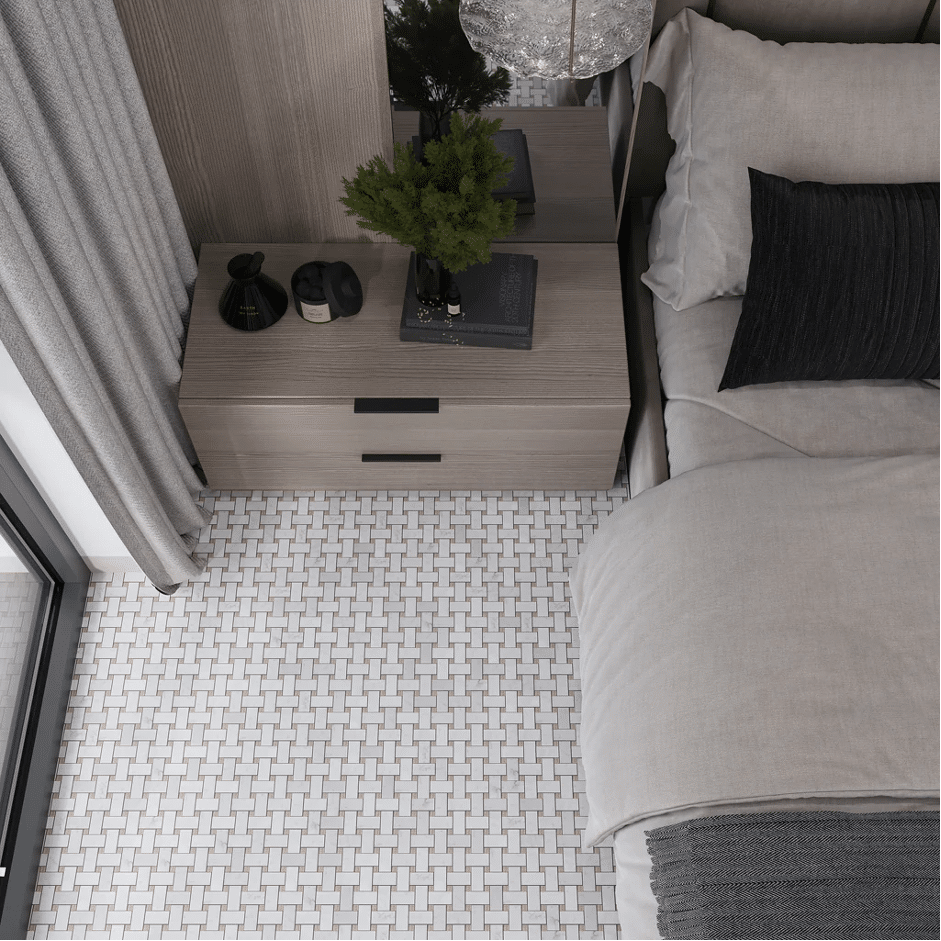Planning a complete overhaul or looking for a simple change? Selecting the perfect floor or backsplash tile involves careful consideration of your space, desired aesthetic, and functional needs. But with so many options available, making the right pick can be quite tricky.
We’ll break down the process of choosing the perfect tiles for your home in the guide below. Keep these in mind and you’ll be well on your way to choosing the ideal tile with confidence!
1. Assess your space first

First thing first, take a moment to access the space you intend to tile. Consider the function, layout, foot traffic, lighting, and upkeep and how all these will impact material, design, and color choices.
2. Explore tile types and qualities

Tiles are available in different materials. Popular options include ceramic, porcelain, metal, glass, and natural stone. They are durable, water- and stain-resistant, easy to clean, and will last decades and then some.
Ceramic tile is loved for its clean, modern sensibility. It is versatile and affordable, allowing you to create a luxe look for less. If you’re after exceptional durability, the enduring strength of porcelain floor tile is unmatched. It’s an all-rounder for both indoor and outdoor use.
Glass mosaics are a popular shower floor tile. The many grout lines provide extra grip underfoot. Offered in a variety of subtle, warm, and vibrant colors, its iridescent quality makes a huge impression on kitchen backsplashes, too.
The beauty of marble tiles goes from aesthetically pleasing to simply captivating. But it is a porous material that scratches and stains easily. Regular sealing is necessary to enhance its durability and resilience.
3. Define your home’s aesthetic

Are you drawn to modern, classic, vintage, or contemporary style? Do you prefer the vibrancy of a Moroccan-inspired kitchen? Perhaps a coastal bathroom theme is more your vibe? Take time to think about your desired aesthetic and what you aim to achieve with your space.
This step will help narrow down options to the best tile for you. What’s interesting about tile is how it shapes itself to fit in with all sorts of interior settings. So, finding material to match your fancy shouldn’t be too taxing.
4. Choose color, shape, and size

Pick a color that complements your desired look. Stick to no more than three hues so as not to overwhelm your space. Soft neutral floor tiles add a refined touch. A bold and daring tiled kitchen backsplash can enliven a muted scheme. Soothing blues and greens are great for a tranquil, spa-like bathroom.
Herringbone and diagonal patterns can enhance the room’s perceived length. While square, penny, and hexagon tiles add a sense of movement and modernity. Large-format floor tiles are a fabulous idea for the living room, dining room, and bedroom. They showcase fewer grout lines and render a seamless look.
Subway wall tiles and intricate mosaics are a go-to for kitchen and bathroom backsplashes. They add depth and dimension—and can be the room’s focal to which the eye is drawn.
5. Measure twice, buy once

Getting measurements right is essential when selecting tiles for your home. Measure (and double-check) the intended area then work out the number of tiles needed. Factor in tile trims so you can give your design a nice, polished finishing detail. It’s advisable to invest in 10% – 15% more tiles for wastage. This way, you are sure of a seamless fit without any installation issues.
6. Set (and stick to) a budget

Once you have identified your style and material, set a budget for tile and installation costs. Keep an eye out for tile discounts and special offers that may help you get the best value for your investment.
7. Shop for tile samples

Lastly, shop for product samples before committing to a large purchase. This way, you can experience a true representation of how the tile will look in your home. Does it complement your aesthetic? How does lighting throughout the day affect color and finish? Many may not think it, but such considerations are crucial to choosing the perfect glass, marble, or ceramic tile.
